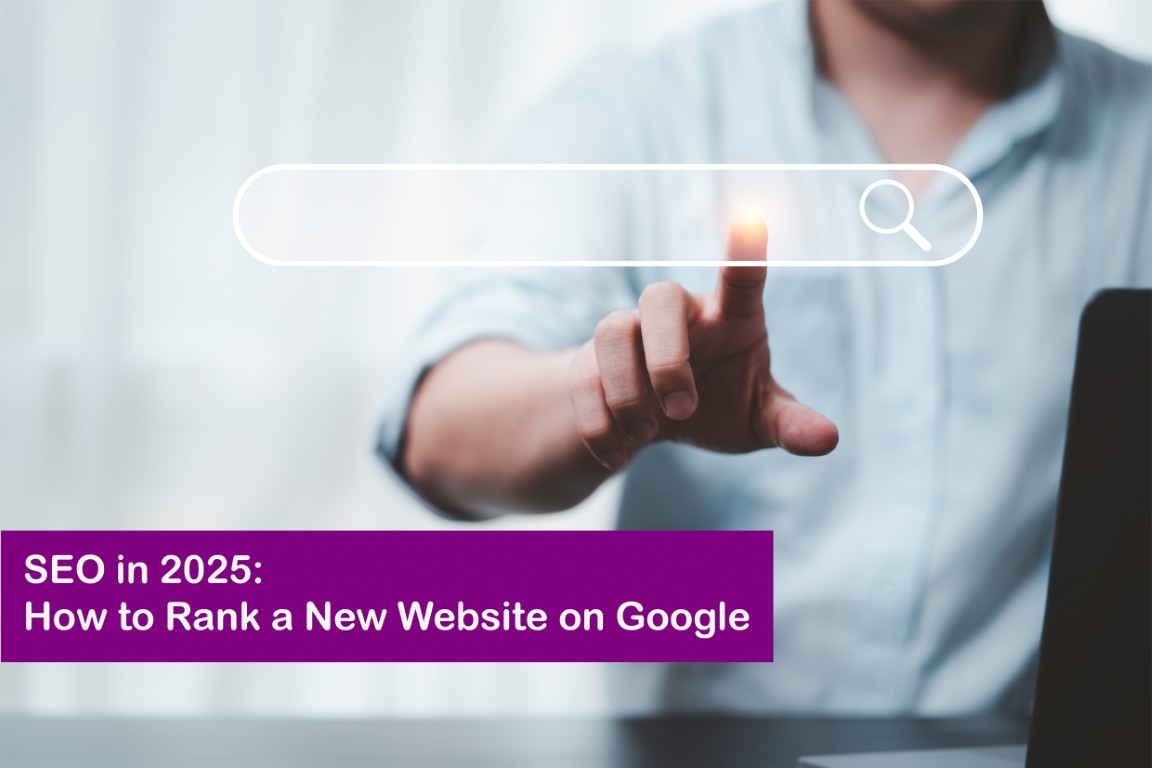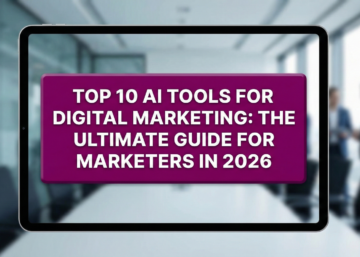SEO in 2025: How to Rank a New Website on Google (Step-by-Step Guide)
Starting a new website in 2025? Want to see it on Google’s first page? Whether you’re a startup founder, small business owner, freelancer, or passionate blogger, mastering Search Engine Optimization (SEO) is your most powerful and cost-effective strategy for long-term online success. SEO helps bring targeted traffic to your site without spending on paid ads, and in 2025, with smarter algorithms and evolving search trends, it’s more essential than ever to build a strong foundation from the start.
In this complete SEO guide, we’ll walk you through the most effective SEO practices that will help your brand-new website climb up the search engine rankings. These techniques are designed to boost your visibility, attract the right audience, and establish authority in your niche—all without relying on expensive advertising campaigns.
What is SEO and Why It Matters in 2025?
SEO (Search Engine Optimization) is the process of optimizing your website and its content to make it more visible in organic search results. When people search for a product, service, or topic online, search engines like Google show the most relevant and trustworthy results. SEO helps your site get featured in those results.
In 2025, SEO is no longer about just stuffing keywords or getting backlinks. Google now emphasizes user intent, page experience, and content quality. That means your website needs to load fast, look great on all devices, and provide real value to users. If done right, SEO will:
- Bring consistent, long-term organic traffic
- Help you build authority and trust with your audience
- Generate quality leads and conversions without spending on ads
1. Set Up Google Search Console & Analytics
The very first step in any SEO journey is to connect your website to Google Search Console and Google Analytics. These free tools from Google offer a treasure trove of data. Search Console shows how your site performs in Google Search—what keywords people are using to find you, what pages are indexed, and any technical errors. Analytics tells you how users behave on your site—how long they stay, what pages they visit, and where they come from. This data is crucial for improving your SEO strategy over time.
2. Choose the Right Keywords (2025 Trends)
Keyword research remains the foundation of SEO. In 2025, focus on long-tail, conversational keywords that match user intent. Tools like Google Keyword Planner, Ubersuggest, SEMrush, and Ahrefs can help you discover high-potential keywords with low competition. Look for phrases that your target audience is actively searching for, especially ones that solve a specific problem or answer a common question.
Example keywords:
- “best SEO strategy for startups 2025”
- “how to rank new website on Google”
- “SEO for small business website”
Focus on integrating these keywords naturally into your content, titles, meta descriptions, and headers. Avoid keyword stuffing; instead, aim to provide relevant, useful content that addresses the user’s needs.
3. Optimize Your Website Structure
Website architecture plays a huge role in SEO. A clean, logical structure helps both users and search engines understand your site better. Use simple, SEO-friendly URLs (e.g., yoursite.com/seo-guide-2025), avoid excessive parameters, and keep your URL hierarchy organized. Ensure your pages are linked together in a logical way so visitors can easily navigate and Google can efficiently crawl your site.
- Use SEO-friendly URLs
- Make navigation intuitive and user-centric
- Use proper heading tags (H1 for title, H2 for subheadings)
4. Write High-Quality, Helpful Content
In 2025, content that serves the user wins. Google’s Helpful Content Update rewards pages that answer real questions, solve problems, and deliver value. Focus on creating well-researched, original content tailored to your audience’s needs. Use a conversational tone, break content into readable sections, and include multimedia like images, videos, and infographics to make your content more engaging and useful.
- Write for humans first, then optimize for search engines
- Address frequently asked questions in your niche
- Use visuals to enhance understanding and reduce bounce rate
5. Make Your Site Mobile-Friendly & Fast
More than 70% of website traffic in 2025 comes from mobile devices. A mobile-friendly site with fast-loading pages is not just preferred by users—it’s prioritized by Google. Use responsive design frameworks, compress large images, and reduce JavaScript to make your site snappy. Tools like PageSpeed Insights and GTmetrix can help you measure and improve loading times.
- Ensure full mobile responsiveness
- Load pages under 3 seconds
- Implement caching and code optimization
6. Internal Linking Strategy
Internal links connect your pages together, helping Google understand your site’s structure and distributing authority across pages. Use relevant anchor text when linking to other articles or sections of your website. This improves user navigation, increases page views, and boosts SEO. A good internal linking strategy also keeps visitors on your site longer, reducing bounce rates.
7. Build Quality Backlinks
Backlinks remain one of Google’s top ranking factors. A backlink is essentially a vote of confidence from another site. Aim to get backlinks from authoritative and niche-relevant sources through strategies like guest blogging, submitting your site to directories, publishing press releases, and collaborating with influencers or partners. Avoid spammy backlinks—they can hurt your rankings.
8. Optimize On-Page Elements
Every page should be fully optimized for its target keyword. Include your main keyword in the title tag, meta description, URL, and the first 100 words of your content. Use image ALT tags to help visually impaired users and improve image search ranking. Well-optimized on-page elements can significantly boost your visibility on search engines.
- Keyword-rich and compelling titles
- Descriptive meta tags for higher click-through rates
- Optimized images and alt attributes
9. Submit Sitemap & Robots.txt
Help Google discover and crawl your site effectively by submitting your sitemap.xml and checking your robots.txt file in Google Search Console. A sitemap lists all the important URLs on your site, while the robots.txt file tells search engines which pages to crawl or ignore. Keeping both updated ensures better indexing and prevents crawling issues.
10. Be Consistent & Patient
SEO is not a one-time task—it’s an ongoing process. Keep publishing fresh, high-quality content, update existing posts, and continue optimizing based on analytics data. While it might take 3–6 months to see significant results, the traffic you gain from SEO is sustainable and doesn’t vanish overnight like paid ads.
Bonus: SEO Tools You Should Be Using in 2025
- Google Search Console & Analytics – For monitoring and analyzing site performance
- Yoast SEO – Great for on-page SEO (especially for WordPress users)
- Ubersuggest – Free tool for keyword research and site audits
- SEMRush / Ahrefs – Best for competitor analysis, backlink tracking, and in-depth SEO insights
- PageSpeed Insights – Test and improve your site’s loading speed
Why Kardhar Infotech Is the Right SEO Partner to Rank Your New Website in 2025?
Ranking a brand-new website in 2025 requires far more than just keywords—it demands a strategic, future-ready SEO approach. Kardhar Infotech brings you expert SEO services specifically crafted to help new websites gain visibility, authority, and top positions on Google quickly and sustainably.
From in-depth keyword research and technical SEO audits to creating high-quality content and optimizing site speed, our team ensures your new website is fully optimized from day one. We also focus on mobile-first indexing, core web vitals, and schema markup—critical elements Google prioritizes in its latest ranking algorithms.
Whether you’re launching a blog, business site, or e-commerce platform, our SEO experts at Kardhar Infotech deliver customized strategies that match your goals and niche. We don’t just follow trends—we set them. Let us help you build a strong online foundation that ranks and converts in 2025 and beyond.








